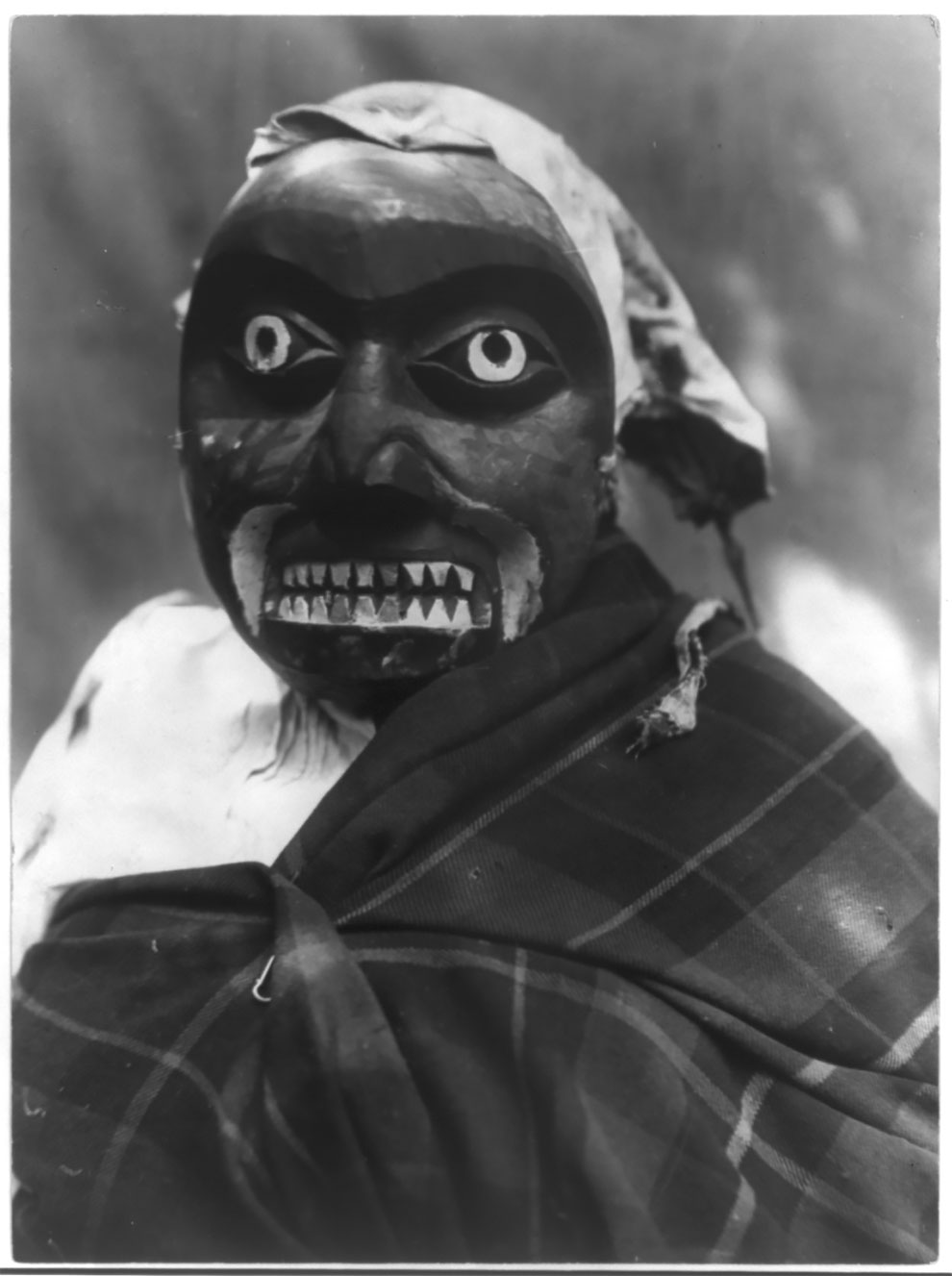Fantastic Photographs Of Native Americans In Ceremonial Masks, 1905-1915
Haschogan (House God) – The Yebichai Hunchback. Photograph shows a Navajo man, half-length, seated, facing front, wearing a ceremonial mask with feathers and with fir or spruce branches forming a wreath around the shoulders.

Edward Curtis’ epic portraits of Native Americans are a joy. And so too are his pictures of North America’s indigenous peoples dressed in ceremonial masks.
h/t: flashbak

Curtis began his quest to record what he feared was a vanishing world in 1901.
“The passing of every old man or woman means the passing of some tradition, some knowledge of sacred rites possessed by no other… consequently the information that is to be gathered, for the benefit of future generations, respecting the mode of life of one of the great races of mankind, must be collected at once or the opportunity will be lost for all time,” he said.

We’d argue that stories last; passed on orally, they take lives of their own, growing and changing in harmony with the people who tell them and listen. The visual portrait is not the be all and end all of a culture. The North Americans Indians were not stuck in an ancient style that would never change. Their culture has roots, branches, dead wood and new shoots. It needed then, as it does now, to breathe in the light or else it dies.
The pictures are wonderful – but as snapshots in time they are only a small and valuable part from the story of a great race.
Tsunukwalahl–Qagyuhl. Person wearing Mask of Tsunukwalahl, a mythical being, used during the Winter Dance.

Hamasilahl–Qagyuhl. Ceremonial dancer.

Nuhlimkilaka–Koskimo. Kwakiutl person wearing an oversize mask and hands representing a forest spirit, Nuhlimkilaka, (“bringer of confusion”).

Paqusilahl–Qagyuhl. Dancer representing Paqusilahl (“man of the ground embodiment”), wearing a mask and shirt covered with hemlock boughs, representing paqus, a wild man of the woods.
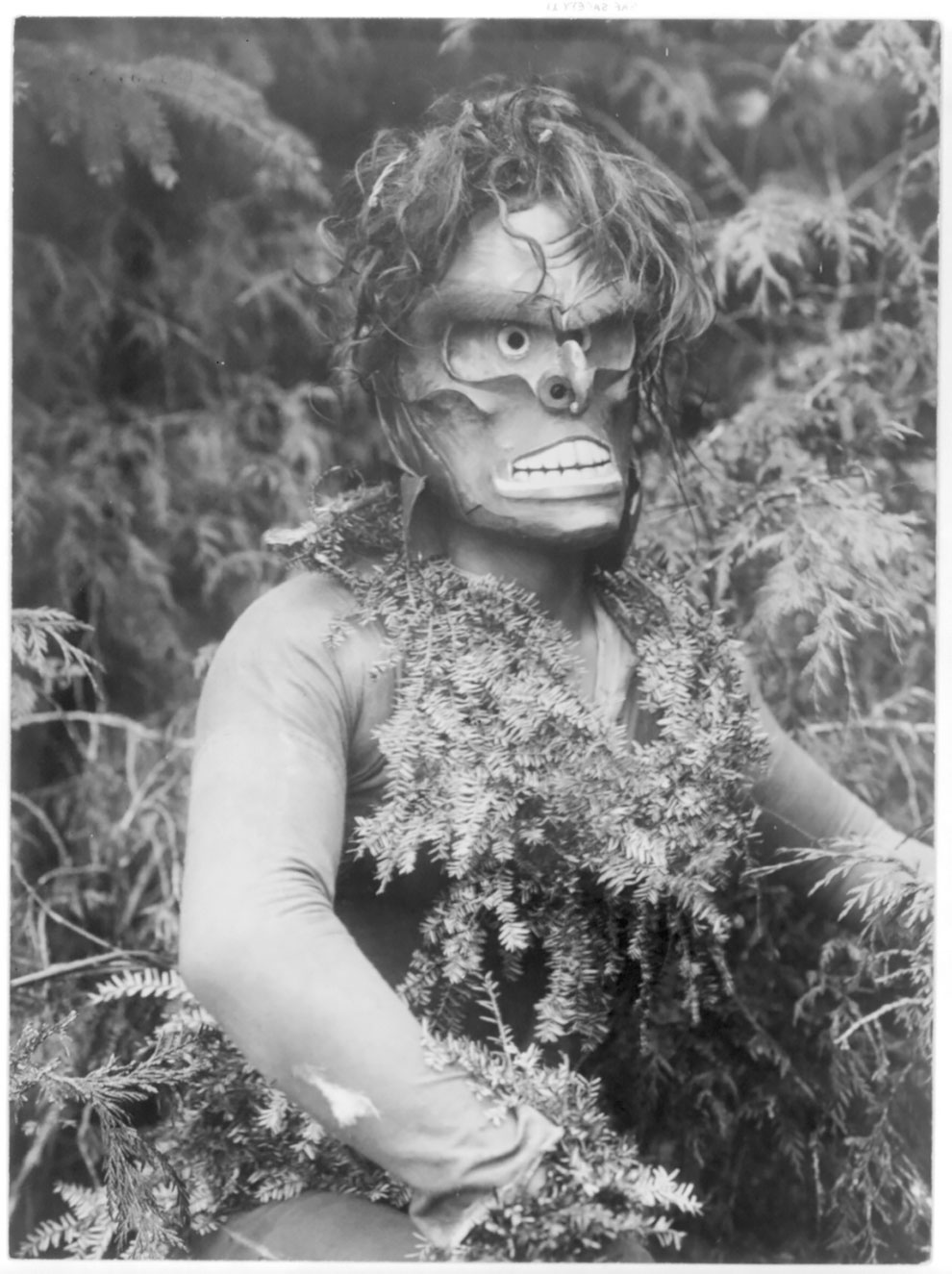
Gaaskidi [i.e. Ganaskidi]–Navaho. Photo shows a Navajo man wearing mask of Ganaskidi, god of harvests, plenty, and of mists
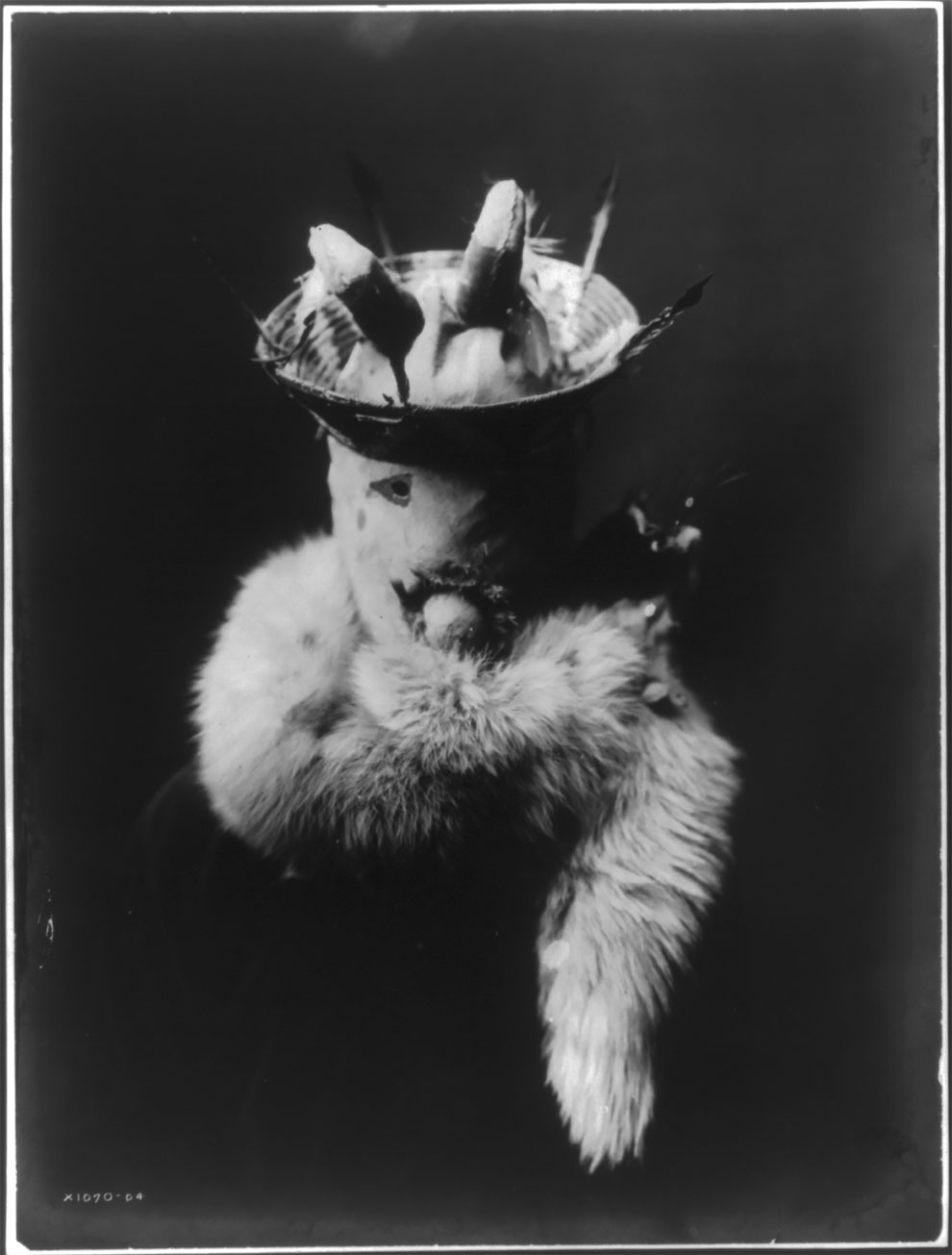
Nuhlimahla–Qagyuhl. Person wearing ceremonial mask of the Nuhlimahla during the during the Winter Dance ceremony. These characters impersonated fools and were noted for their devotion to filth and disorder.
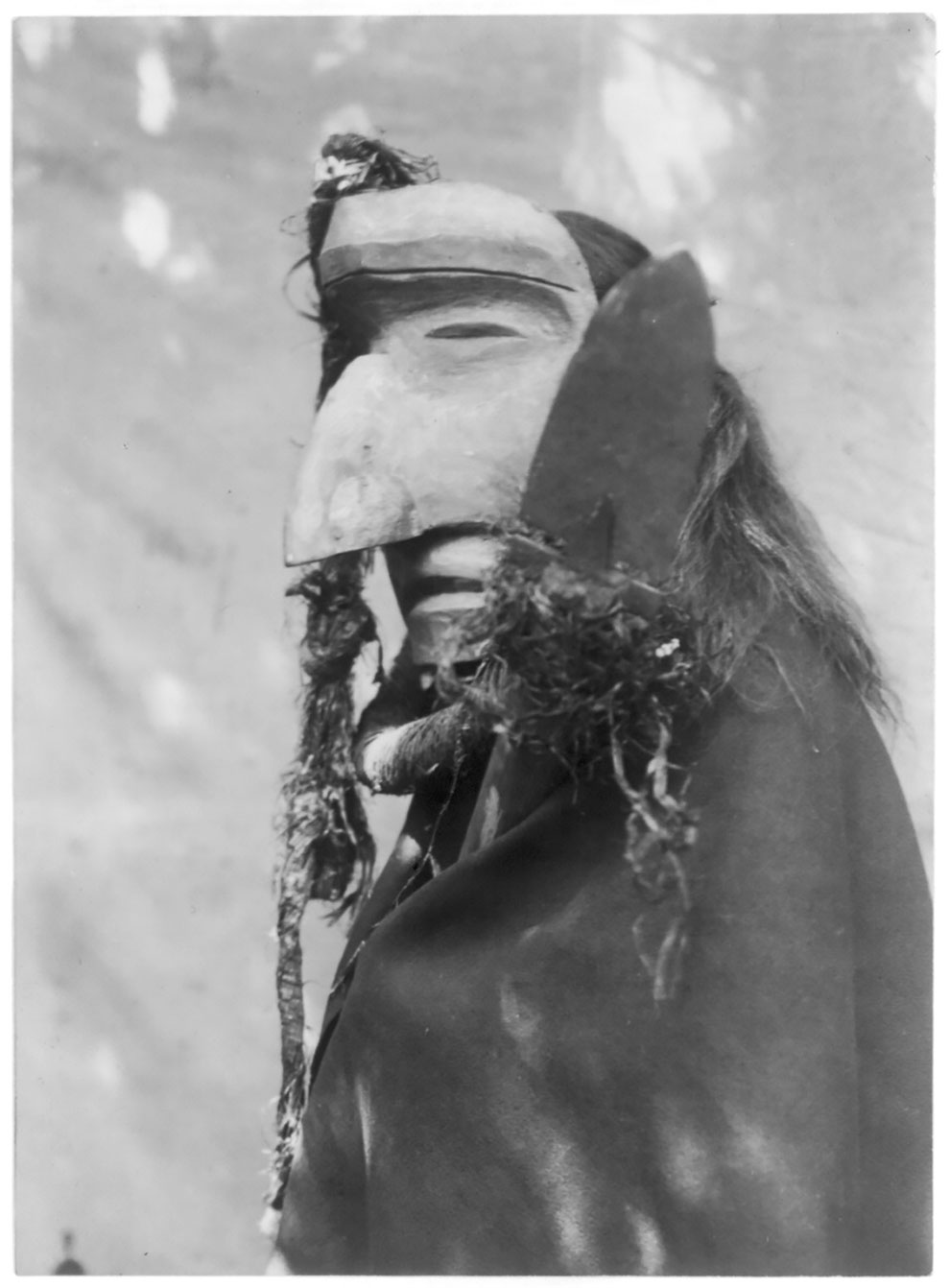
Kwahwumhl–Koskimo. Dancer wearing raven mask with coat of cormorant skins during the numhlin ceremony.
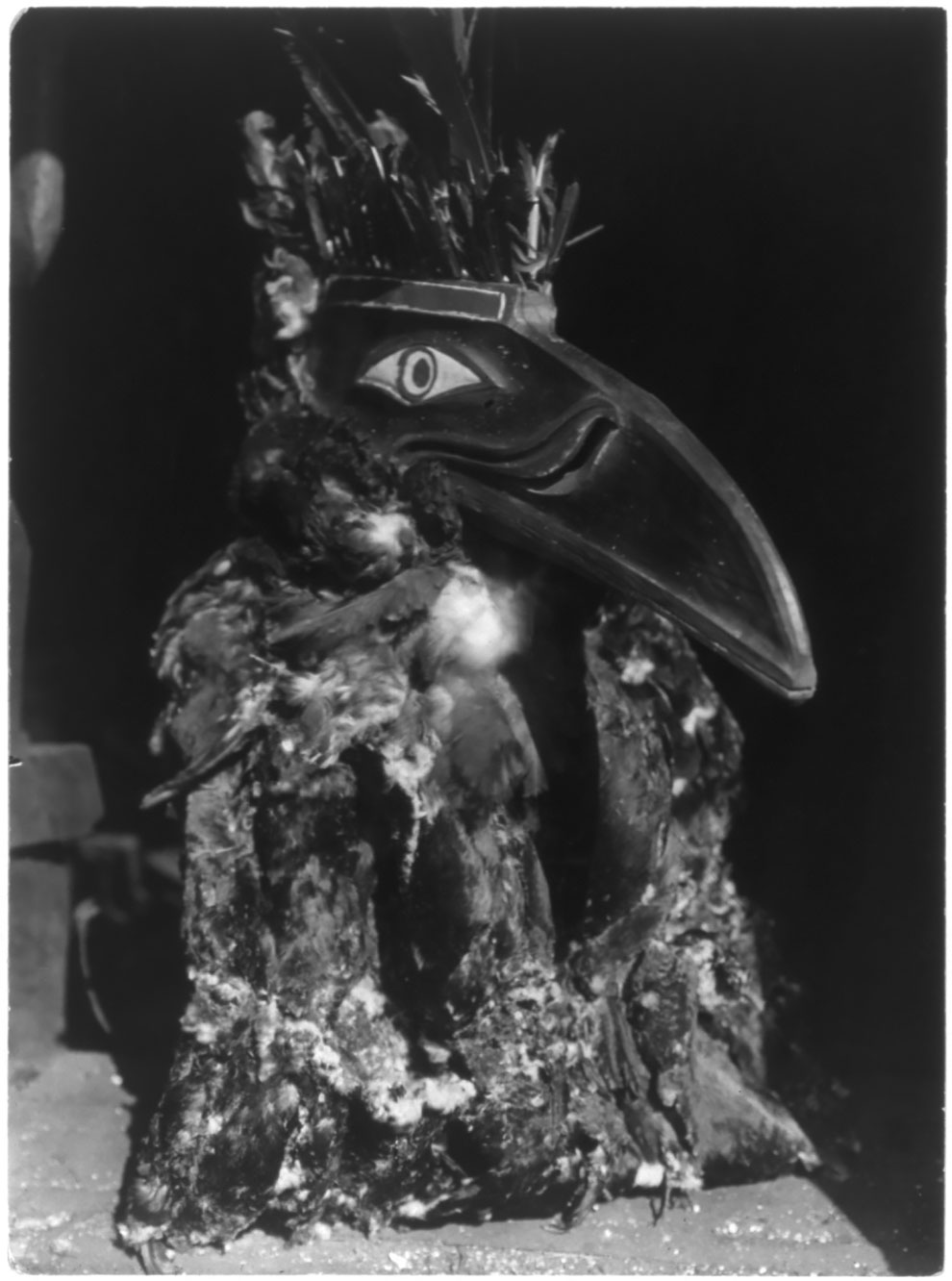
Zahadolzha–Navaho. Indian, head-and-shoulders portrait, facing front, wearing leather mask with basket cap, fur ruff, nude torso painted with white lines.
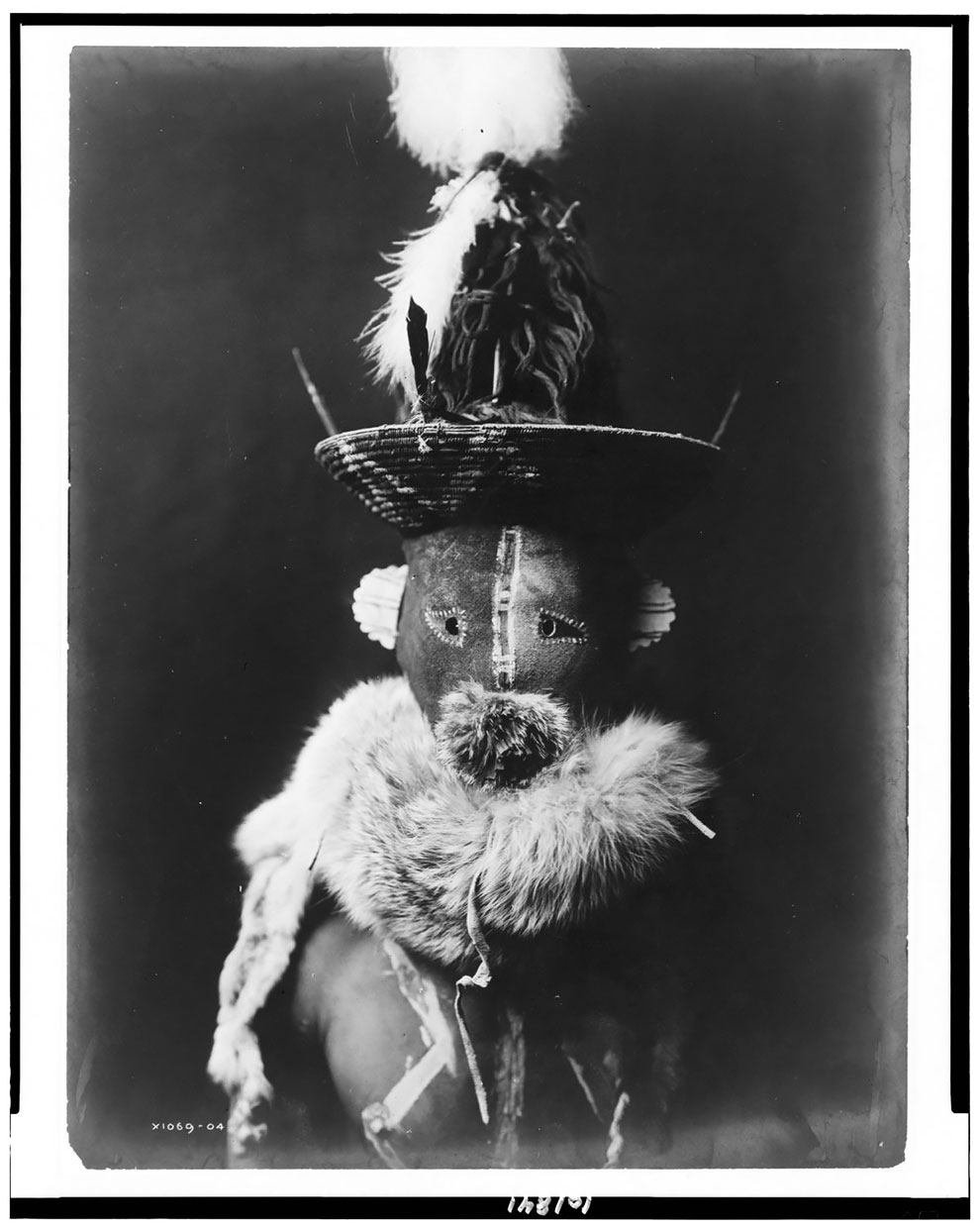
Masked dancer–Cowichan. Dancer wearing oversize mask, three rings of feathers in front of clothing, holding a rattle.

Nayenezgani–Navaho. Indian, half-length portrait, facing front, wearing dark mask, fur ruff, paint on torso.

Hami–Koskimo. Koskimo person wearing full-body fur garment, oversized gloves and mask of Hami (“dangerous thing”) during the numhlim ceremony.
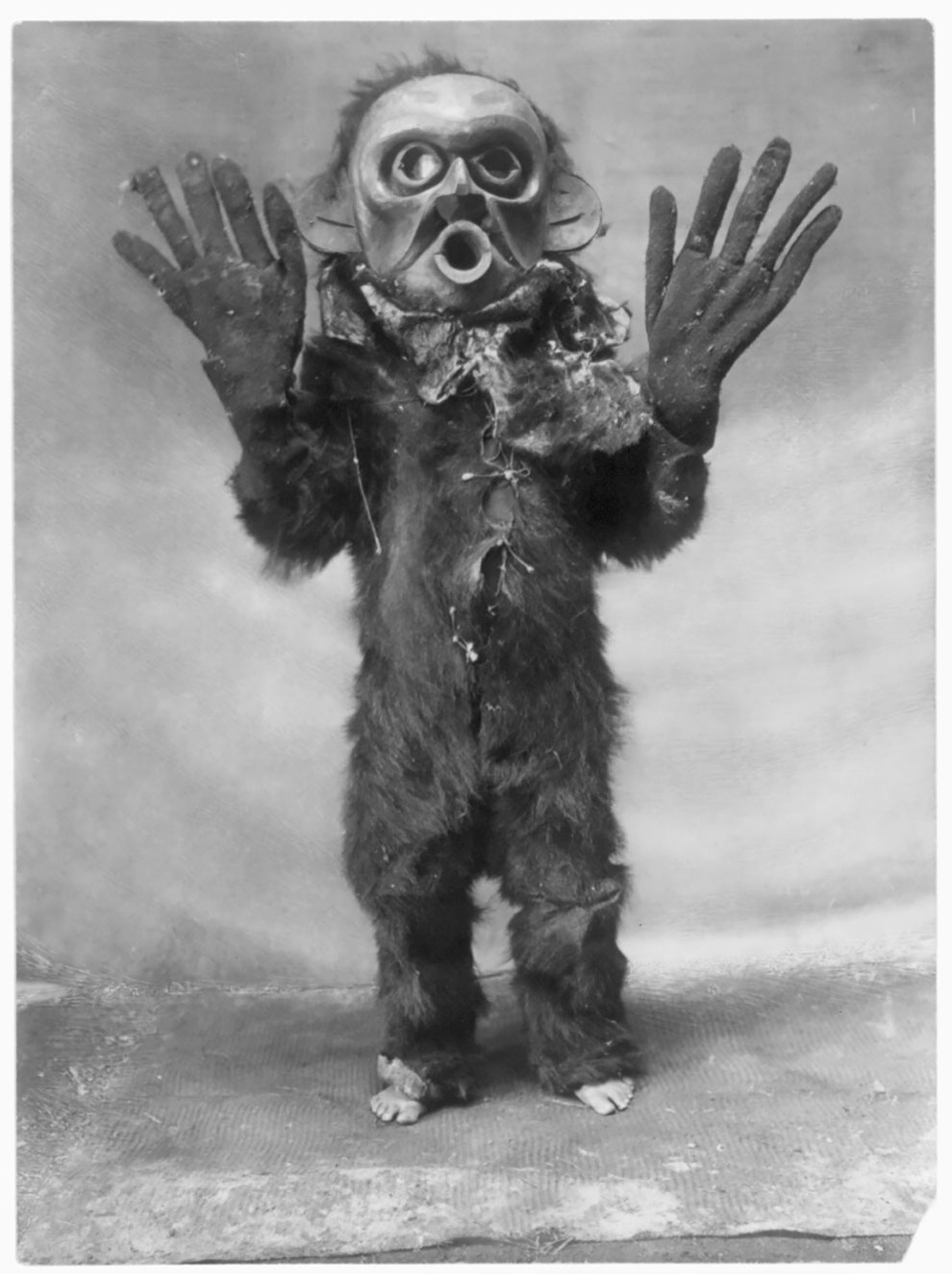
Group of Winter Dancers–Qagyuhl. Ceremonial dancers, in a circle during the Winter Dance ceremony, wearing masks and garments of fur, feathers, and other materials.

Sisiutl–Qagyuhl. Sisiutl, one of the main dancers in the Winter Dance ceremonies, wearing a double-headed serpent mask and shirt made of hemlock boughs.
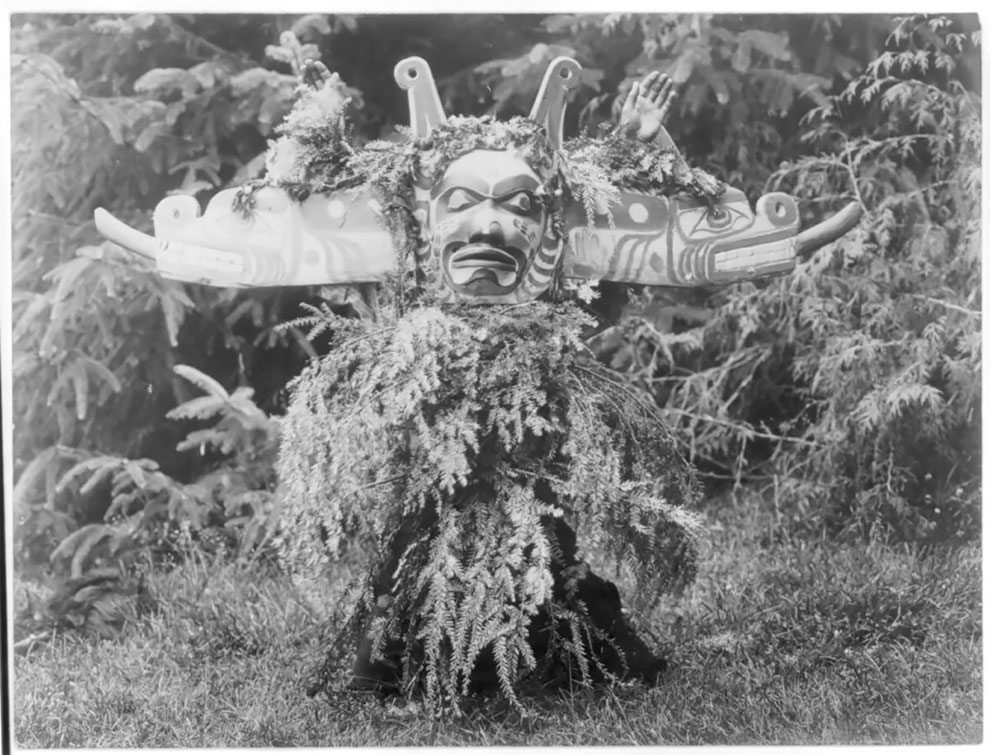
A Tluwulahu costume–Qagyuhl. Woman wearing a fringed Chilkat blanket, a hamatsa neckring and mask representing deceased relative who had been a shaman.

Masked dancers–Qagyuhl. During the winter ceremony, Kwakiutl dancers wearing masks and costumes, crouch in foreground with others behind them. The chief on the far left holds a speaker’s staff. Three totem poles in background.
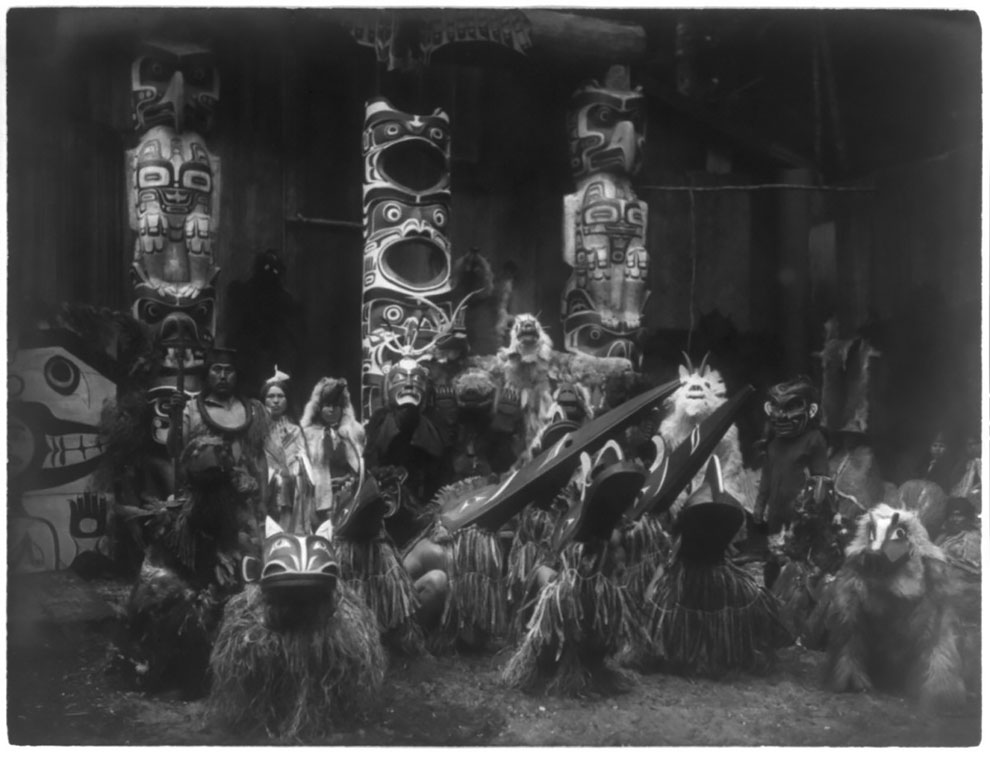
Tonenili–Navaho. Navajo man bedecked in hemlock boughs and mask of a clown associated with the mischievous rain god Tonenili, “Water Sprinkler”.
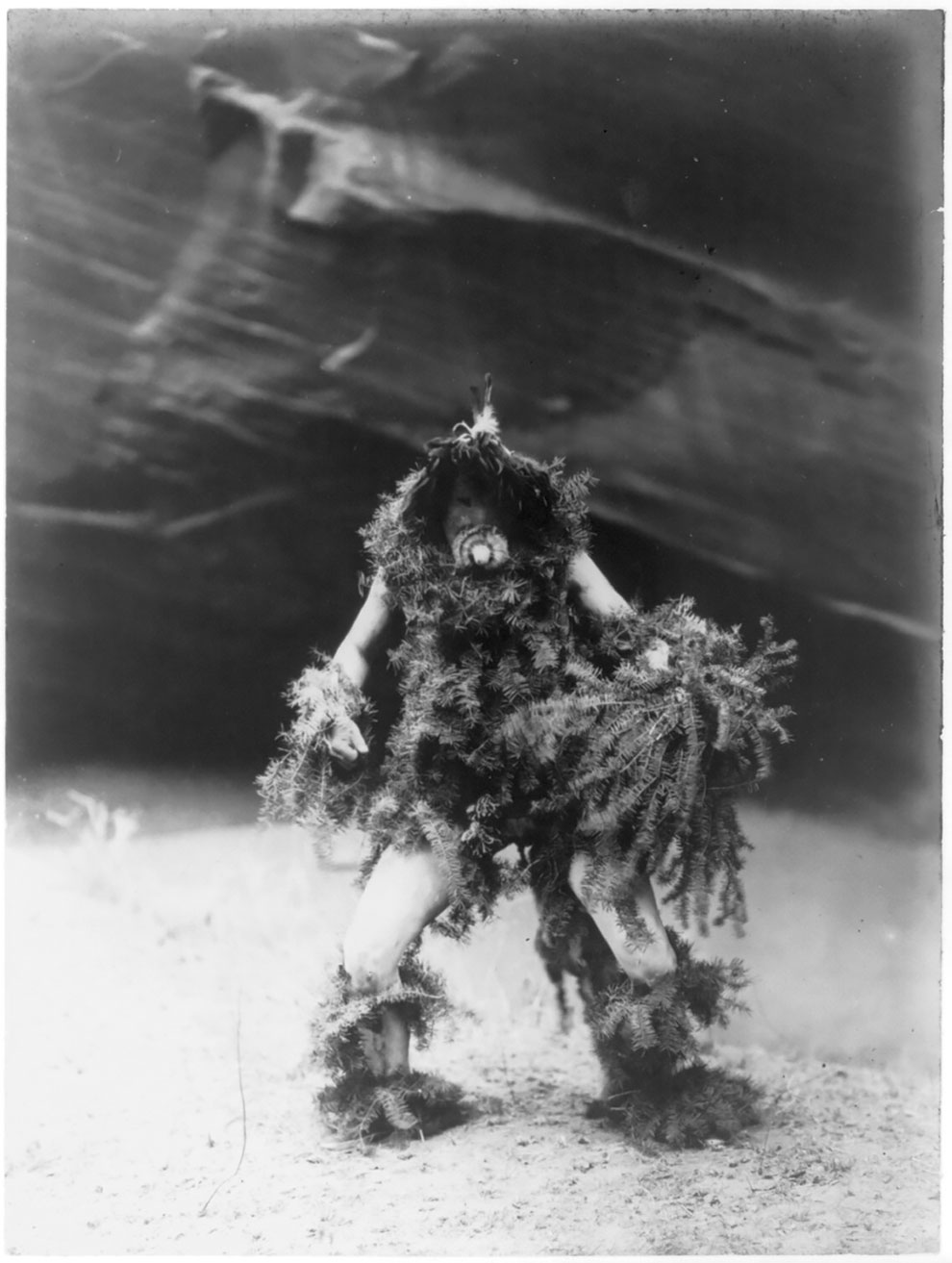
Nayenezgani–Navaho. Indian, full-length portrait, standing, facing front, wearing dark leather mask, fur ruff, cloth girdle, silver concho belt and necklaces.
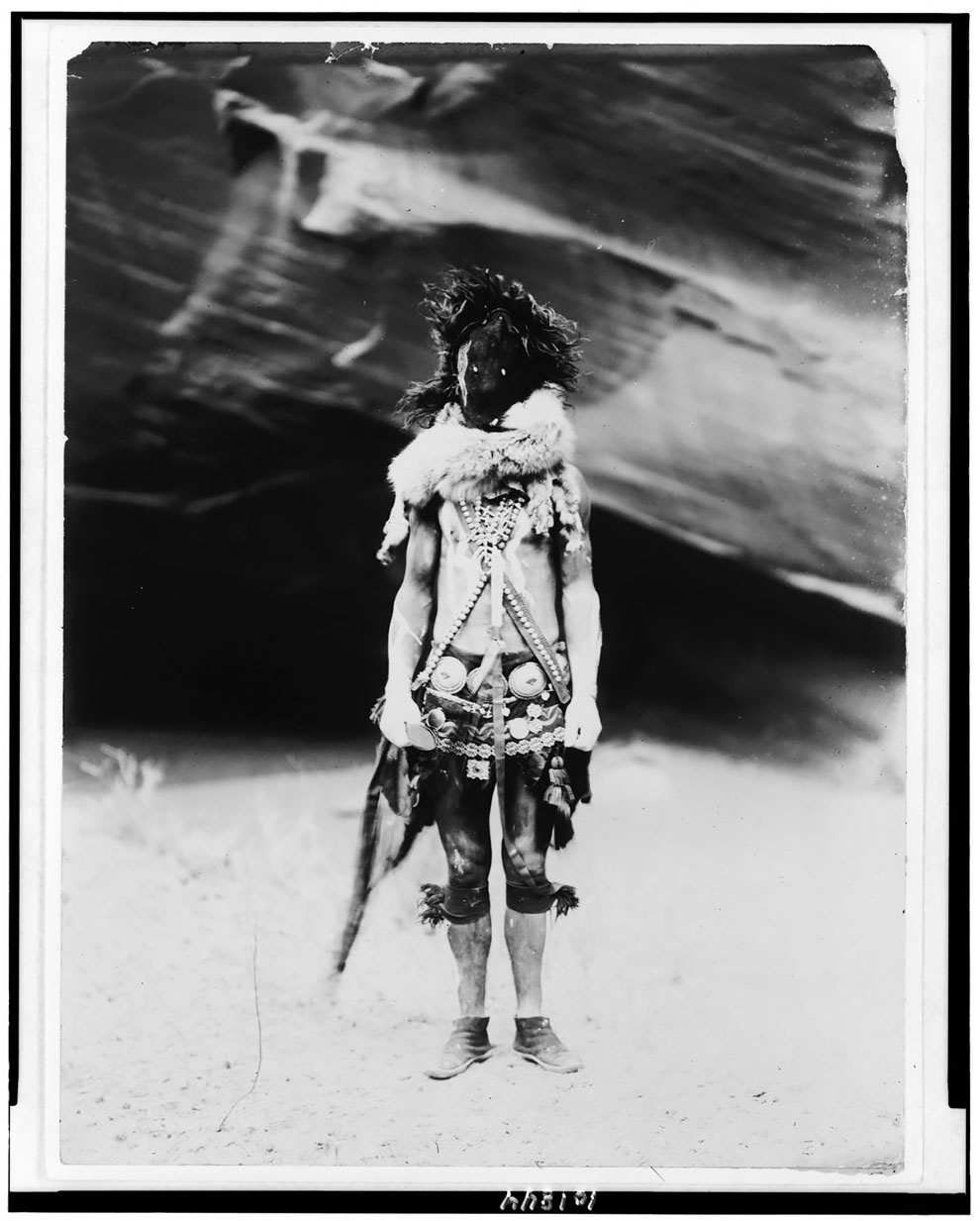
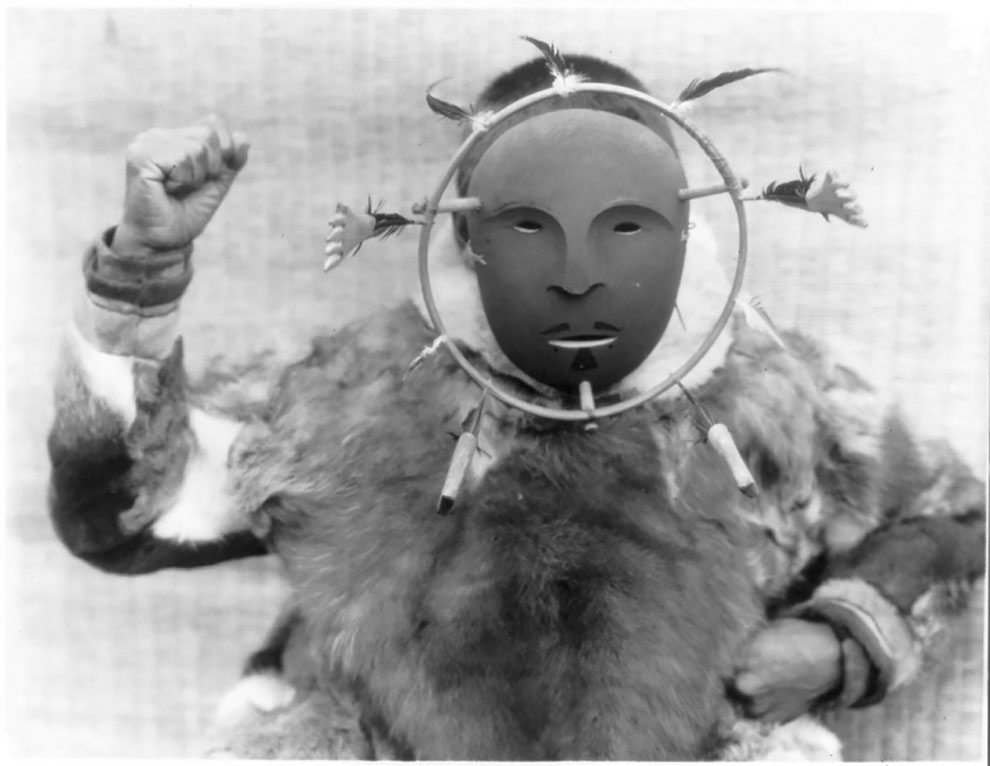
Atlumhl– Koskimo. North American Indian man, in costume with ceremonial mask, on hands and knees.
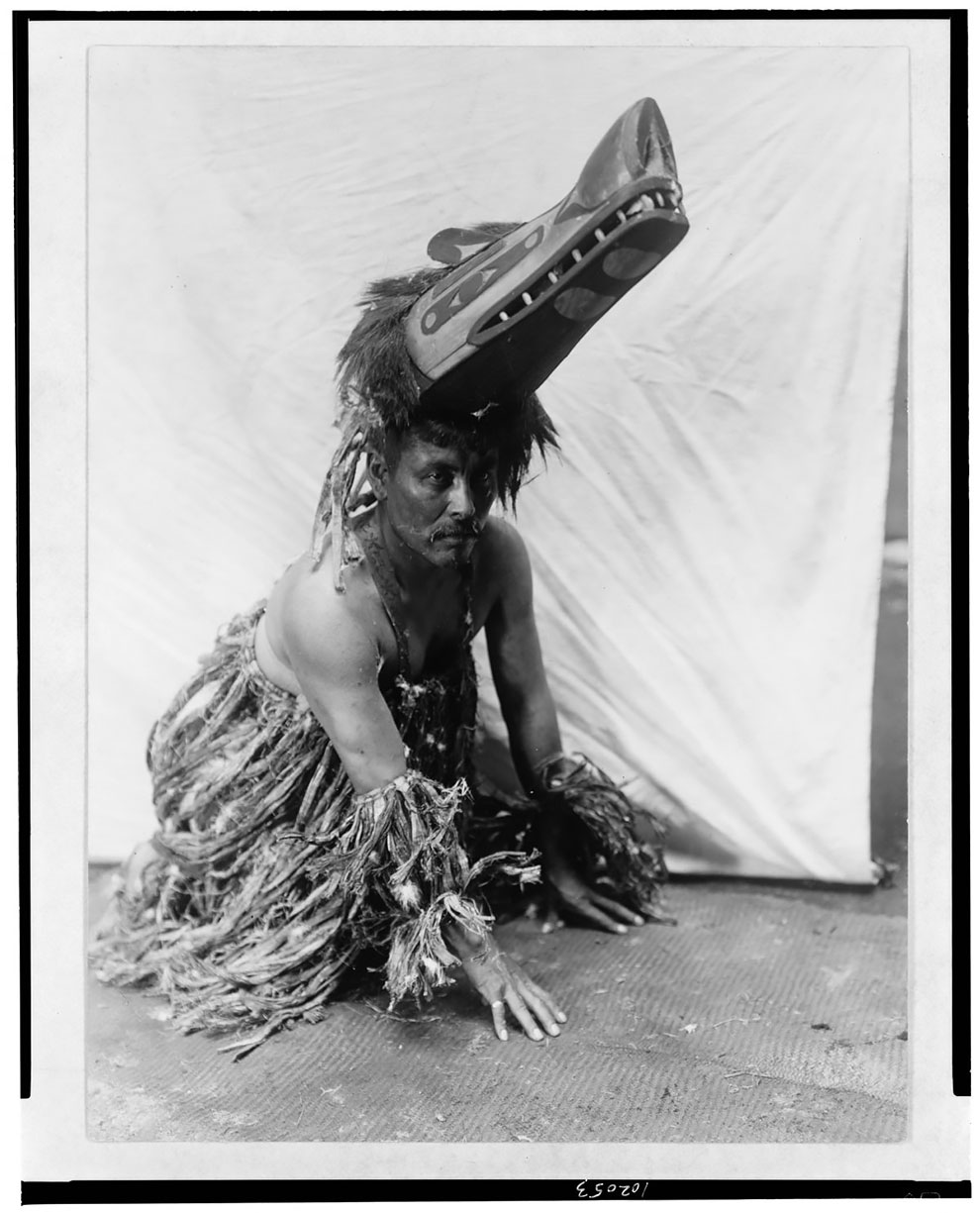
Mask of the octopus hunter–Qagyuhl. Ceremonial mask worn by a dancer portraying the hunter in Bella Bella mythology who killed the giant man-eating octopus. The dance was performed during Tluwulahu, a four day ceremony prior to the Winter Dance.
